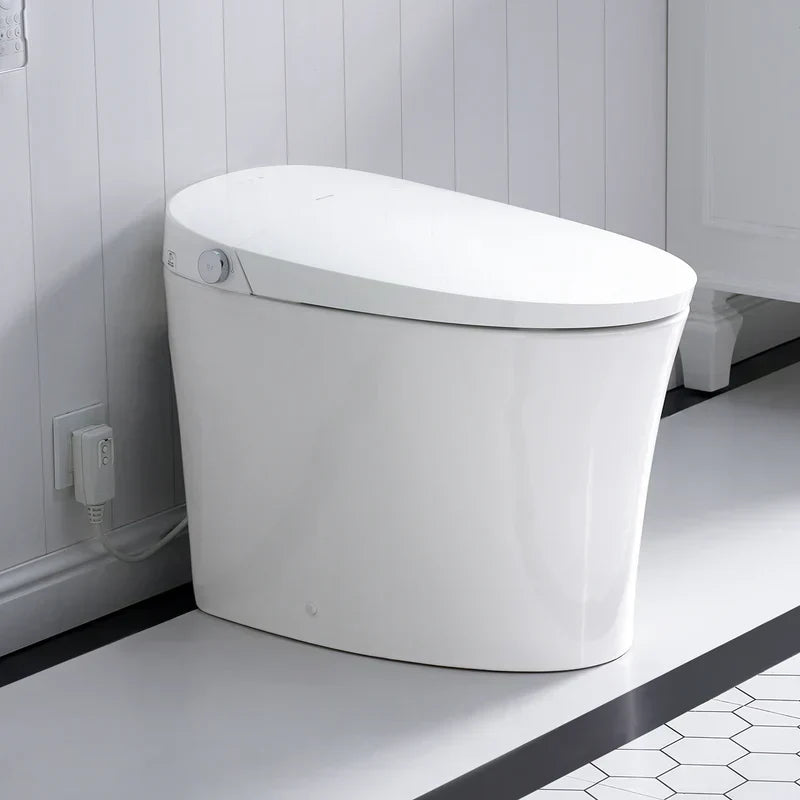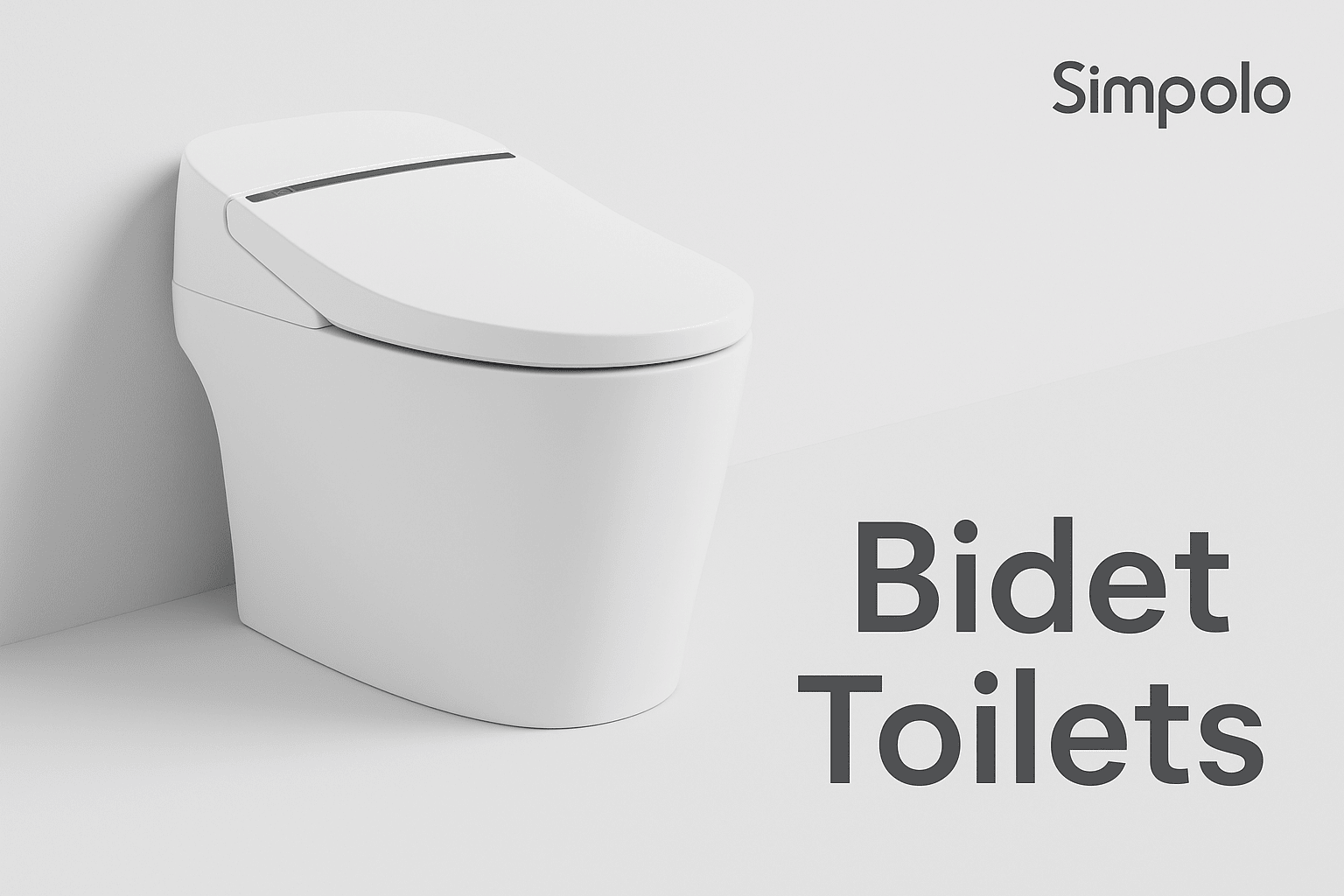16 min read
Are you ready to upgrade your bathroom experience with the perfect bidet water temperature? Getting the right setting can make all the difference between comfort and discomfort every time you use your bidet.
Whether you prefer a gentle warm rinse or a cooler refresh, understanding how to adjust your bidet’s water temperature is key to feeling clean and comfortable. In this guide, you’ll discover simple tips and expert advice to customize your bidet just the way you like it.
Keep reading to unlock the secrets to a soothing, personalized cleanse that fits your needs perfectly.

Credit: bidetsmartstore.com
Why Water Temperature Matters
Water temperature affects comfort and hygiene during bidet use. Setting the right temperature improves your experience.
Too hot or too cold water can cause discomfort or skin problems. Knowing the right temperature is important.
Benefits Of Warm Water
Warm water feels gentle and soothing on the skin. It helps clean better than cold water.
Using warm water can relax muscles and reduce irritation. It also helps remove oils and dirt more easily.
- Increases comfort during cleaning
- Reduces skin irritation
- Improves hygiene by removing oils
- Relaxes muscles in the area
Risks Of Cold Water
Cold water can cause discomfort, especially in cold weather. It may lead to muscle tension or cramps.
Using cold water may not clean as well. It can leave oils and dirt on the skin, causing irritation or infections.
- Causes discomfort and chills
- Can tighten muscles and cause cramps
- Less effective at cleaning oils
- May increase skin irritation risks
Ideal Temperature Range
The best water temperature for bidets is warm but not hot. It should be comfortable to touch without burning.
Temperatures between 95°F and 105°F (35°C to 40°C) work well. This range is safe and soothing for most people.
| Temperature (°F) | Temperature (°C) | Effect |
|---|---|---|
| Below 90°F | Below 32°C | Too cold, may cause discomfort |
| 95°F – 105°F | 35°C – 40°C | Ideal, comfortable and safe |
| Above 110°F | Above 43°C | Too hot, risk of burns |
Types Of Bidet Temperature Controls
Bidets offer different ways to control water temperature. Choosing the right control helps you stay comfortable.
Temperature controls range from simple manual dials to smart settings. Each type fits different needs.
Manual Temperature Adjustment
Manual temperature controls use knobs or levers. You turn them to make water hotter or colder.
This control type is easy to use and does not need power. You must adjust it each time you use the bidet.
- Simple and reliable
- No electricity needed
- Requires manual turning every time
- May take time to find the right temperature
Automatic Temperature Settings
Automatic controls keep water at a preset temperature. The bidet heats the water before use.
You select your preferred temperature once. The bidet remembers it for future use. This saves time and keeps comfort steady.
- Preheats water for comfort
- Maintains steady temperature
- No need to adjust each time
- Requires electricity or batteries
Smart Bidets And Custom Profiles
Smart bidets allow users to create custom temperature profiles. Each user can save their favorite settings.
These bidets use digital controls and sometimes connect to apps. They offer precise temperature control and extra features.
- Personalized temperature for each user
- Digital controls with easy adjustments
- App connectivity for remote control
- May include other settings like spray strength
Setting Your Bidet Water Temperature
Setting the water temperature on your bidet is important for comfort and hygiene. It helps you enjoy a clean and soothing experience every time.
Most bidets have easy controls that let you adjust the temperature to your liking. This guide will help you find the right settings.
Step-by-step Adjustment Guide
Start by turning on the bidet and setting the water flow to low. This keeps the water gentle while you adjust the temperature.
Use the temperature control knob or buttons to slowly increase or decrease the water heat. Stop when it feels comfortable.
- Turn on bidet with low water flow
- Adjust temperature control slowly
- Test water on your hand before use
- Set temperature to a comfortable level
Finding Your Comfort Zone
Everyone likes different water temperatures. Some prefer warm water, while others like it cooler. Find what feels best for you.
Start with a medium setting and adjust up or down. Pay attention to how your skin reacts and choose a setting that feels soothing.
- Warm water relaxes muscles and skin
- Cool water can feel refreshing
- Avoid water that is too hot or cold
- Adjust based on personal comfort
Seasonal Temperature Changes
Water temperature needs may change with seasons. Cooler months often call for warmer water settings.
In warmer months, you might prefer a cooler setting to stay comfortable. Adjust your bidet as the weather changes.
- Use warmer water in winter for comfort
- Try cooler water in summer to stay fresh
- Check settings regularly to match weather
- Adjust slowly to avoid sudden temperature changes
Health And Safety Tips
Using a bidet improves personal hygiene and comfort. Setting the water temperature correctly is important for safety and health.
Follow simple tips to avoid injuries and keep your bidet clean and working well.
Avoiding Scalding
Hot water can burn sensitive skin quickly. Set your bidet temperature to a safe, warm level.
Test the water before use to avoid sudden hot bursts. Many bidets have temperature controls or safety stops.
- Set water temperature below 104°F (40°C)
- Use bidets with built-in temperature limiters
- Test water temperature before each use
- Keep children supervised when using bidets
Preventing Bacterial Growth
Warm water can encourage bacteria to grow in bidet systems. Clean your bidet regularly to stop this.
Use mild cleaners and follow manufacturer instructions. Proper cleaning helps keep water safe and fresh.
- Flush bidet nozzles with water after use
- Clean nozzles weekly with gentle disinfectants
- Replace filters if your bidet has them
- Keep the bidet dry when not in use
Maintenance For Temperature Systems
Regular maintenance ensures bidet temperature controls work well. Check for leaks or faulty parts often.
Follow the user guide for system checks. Replace worn parts to keep water temperature stable and safe.
- Inspect heating elements monthly
- Check temperature sensors and controls
- Clean or replace filters as needed
- Call a professional for repairs
Additional Comfort Features
Bidets offer more than just water temperature control. Many models have extra features for comfort.
These features make the experience more pleasant and convenient for users.
Heated Seats
Heated seats keep you warm, especially on cold days. They add comfort to your bathroom visit.
Many bidets let you adjust seat temperature to your liking. This helps create a cozy feeling.
Warm Air Dryers
Warm air dryers help dry you after washing. They reduce the need for toilet paper.
You can usually set the air temperature and drying time. This makes drying gentle and effective.
- Adjustable air temperature
- Variable drying duration
- Hands-free drying
Night Light And Remote Controls
Night lights help you see the bidet controls in the dark. They prevent bright bathroom lights from waking you.
Remote controls allow easy use without bending. They often have simple buttons to adjust settings.
- Soft night light for visibility
- Wireless remote for convenience
- Easy-to-use control buttons

Credit: vovo-us.com
Troubleshooting Temperature Issues
Bidet water temperature problems can affect comfort and hygiene. This guide helps you fix common issues.
Follow simple steps to identify and solve heating problems in your bidet.
Water Not Heating Properly
If the water stays cold or only warms slightly, the heating element might be faulty. Check power supply and connections first.
Make sure the bidet is plugged in and the outlet works. Reset the device if it has a reset button.
- Check if the power cord is connected securely
- Test the outlet with another device
- Look for any blown fuses or tripped breakers
- Reset the bidet unit if possible
Inconsistent Temperature Fluctuations
Water temperature changing suddenly can be caused by water pressure changes or sensor errors.
Check if other water fixtures affect pressure. Clean or replace sensors if needed.
- Avoid using multiple water outlets at once
- Inspect temperature sensors for dirt or damage
- Adjust water pressure if possible
- Refer to the user manual for sensor reset instructions
When To Call A Technician
Call a professional if the bidet does not heat after basic checks. Avoid DIY fixes on electrical parts.
Technicians can safely repair heating elements, sensors, and wiring problems.
- Water stays cold after checking power and reset
- Water temperature fluctuates without clear cause
- Signs of electrical damage or burning smell
- Leaks or water damage near heating components

Credit: www.simpolo.com
Frequently Asked Questions
What Is The Ideal Bidet Water Temperature Setting?
The ideal bidet water temperature is usually between 95°F and 105°F. This range ensures comfort and safety during use. Adjust settings based on personal preference and season. Avoid temperatures above 110°F to prevent burns or discomfort.
How Do I Adjust Bidet Water Temperature?
Most bidets have a temperature control dial or digital settings. Check your bidet’s manual for specific instructions. Start with a moderate temperature and adjust gradually to find your comfort level. Some models offer preset temperature options for ease.
Why Is Water Temperature Important For Bidet Use?
Proper water temperature enhances hygiene and comfort. Warm water helps clean more effectively than cold water. It also prevents irritation and improves user experience. Cold water may be shocking, while too hot water can cause burns.
Can I Use Cold Water On A Bidet Safely?
Yes, cold water can be used safely but may feel uncomfortable. Cold water is refreshing but might cause discomfort in colder climates. For best results, use warm water or adjust temperature settings for comfort.
Conclusion
Choosing the right bidet water temperature enhances comfort. Cold water refreshes, while warm water soothes. Test different settings to find your preference. Each person has unique comfort levels. Adjust as needed. Bidet controls usually offer easy customization. Regular checks ensure optimal settings.
Enjoy a pleasant and hygienic experience. Comfortable settings improve daily routines. Try different temperatures for the best result. Remember, personal comfort is key. An adjustable bidet is a worthy investment. Enhance your bathroom routine with the right temperature. Happy cleansing!

